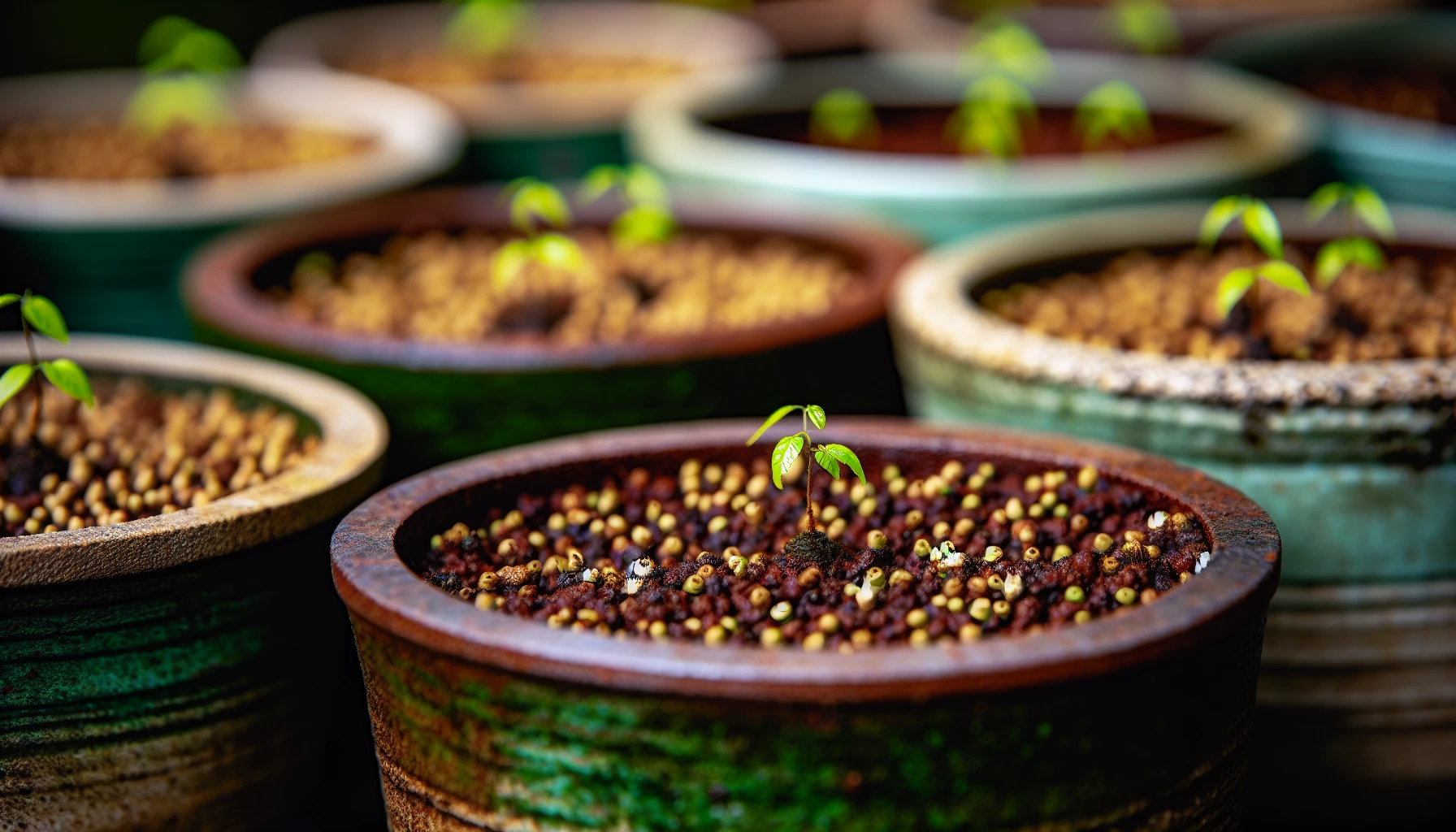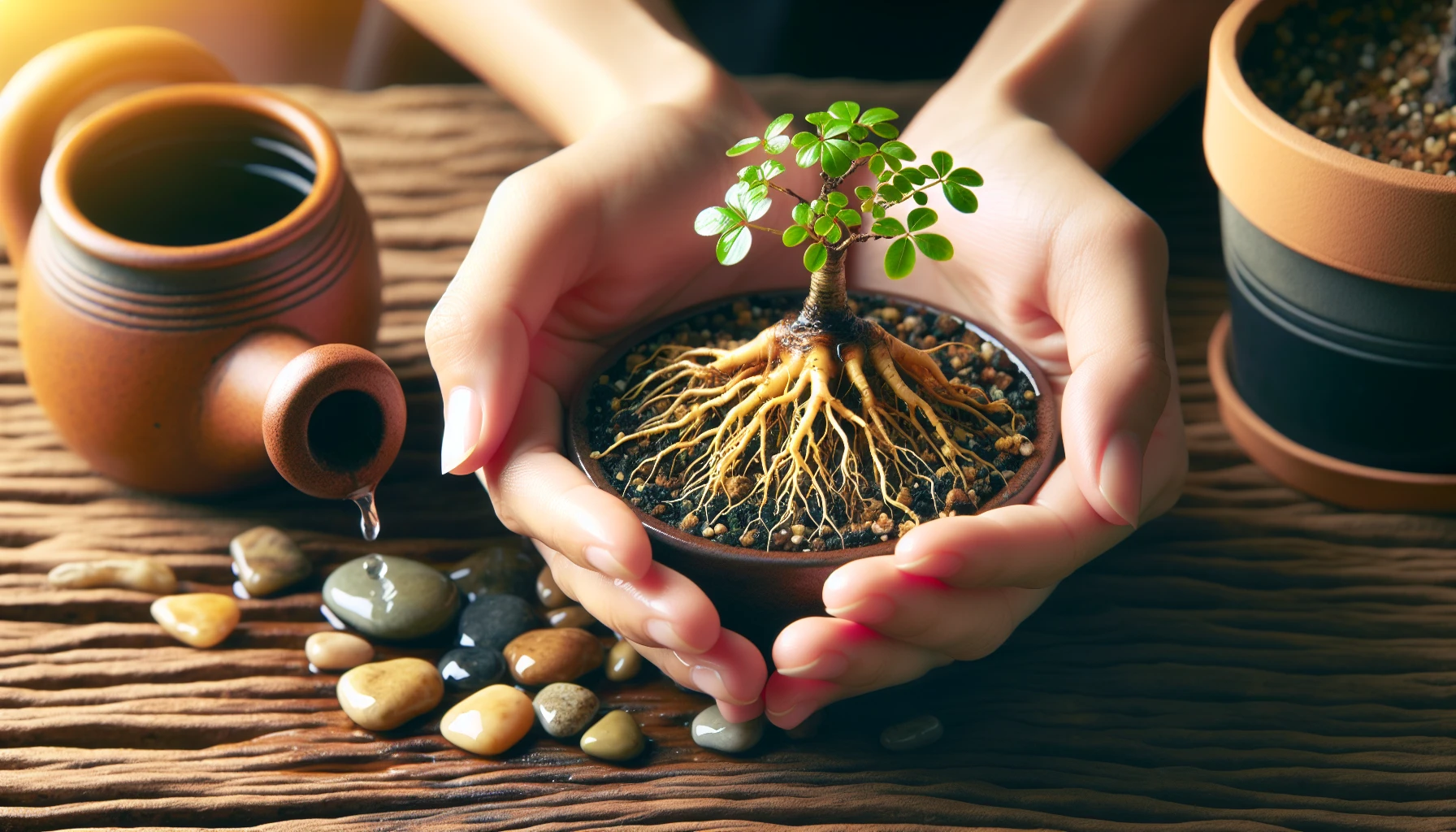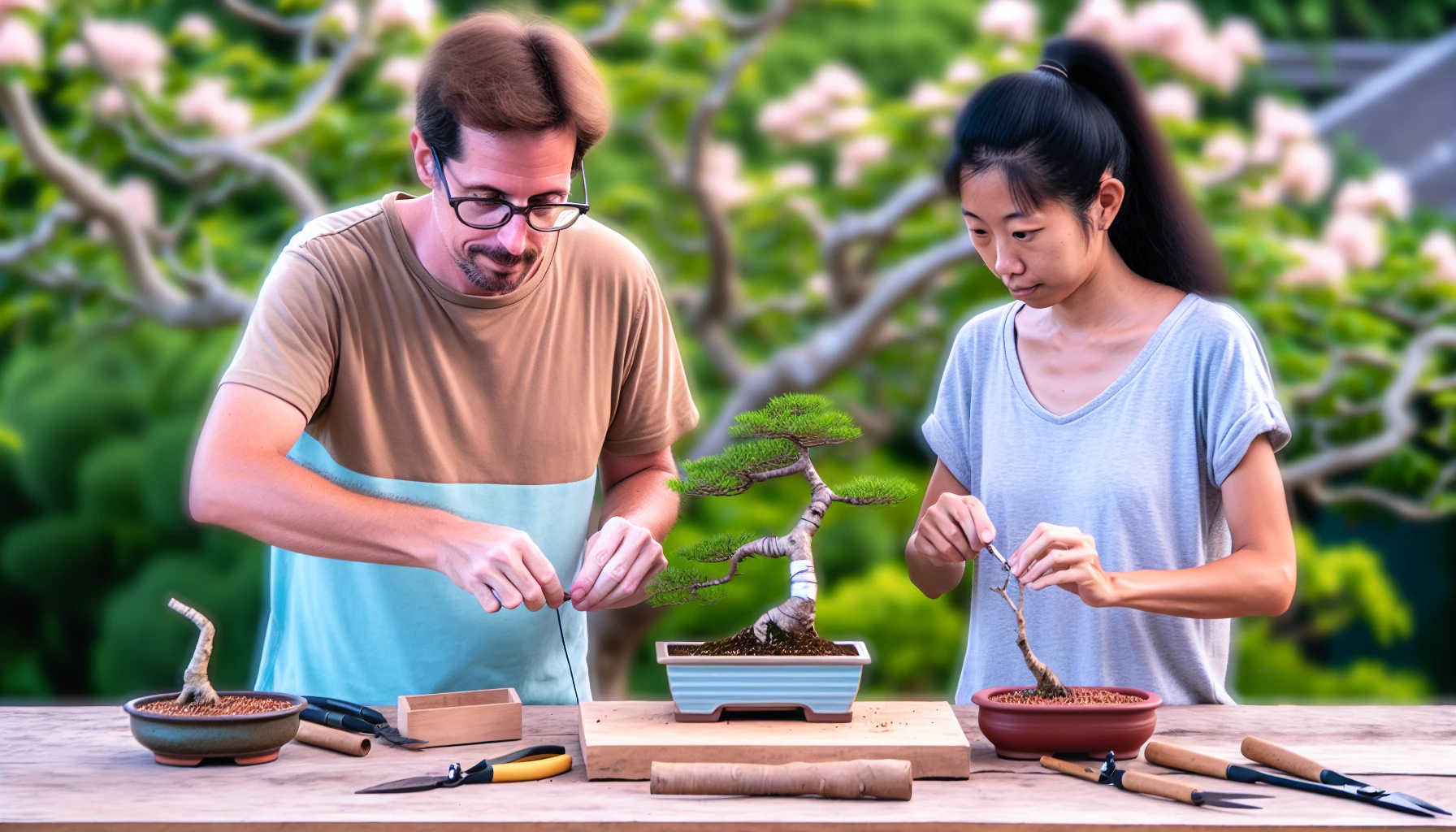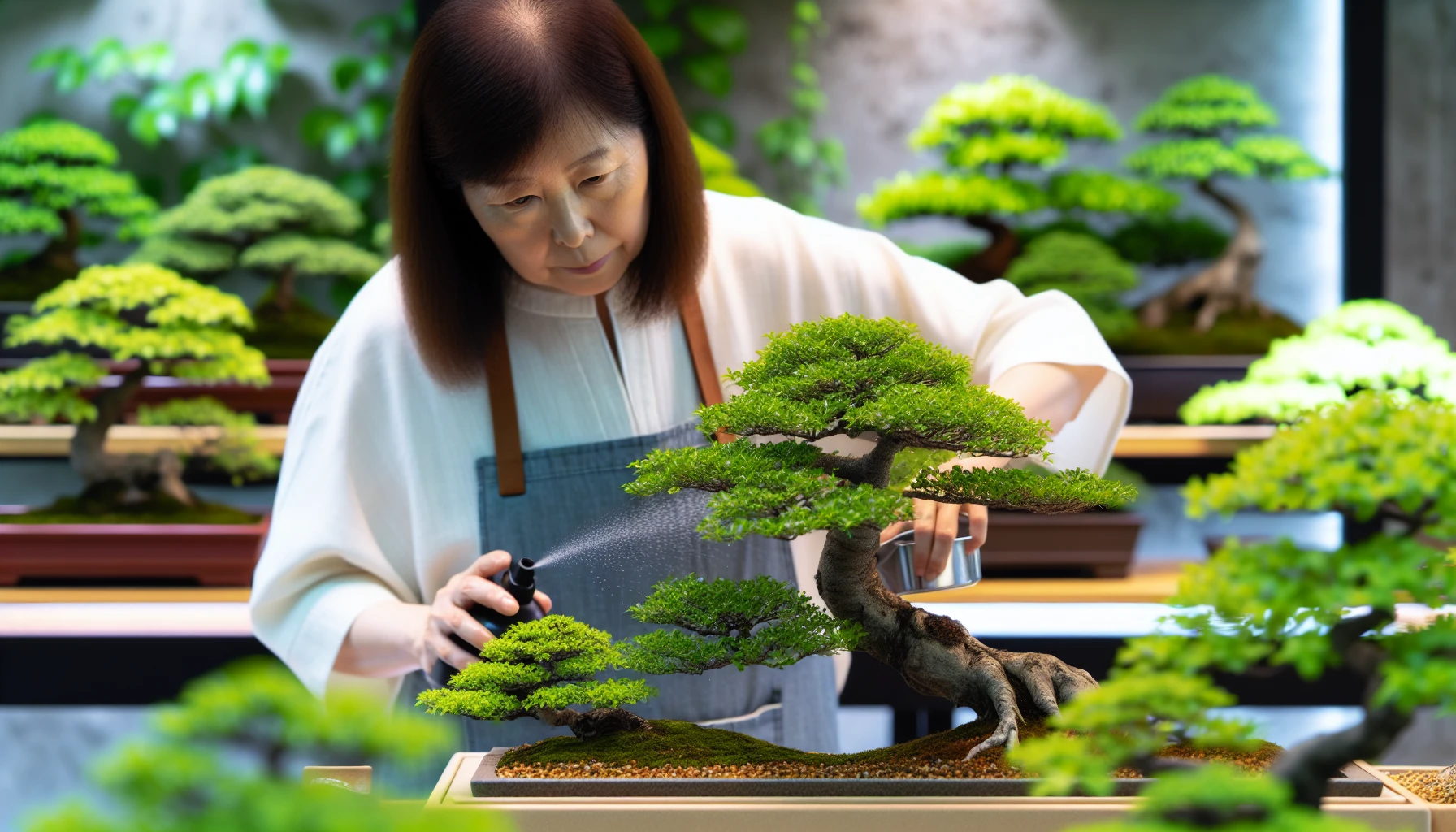HousePlantJoy is supported by our audience. When you purchase through one of our links, we may earn a small affiliate commission. As an Amazon Associate I earn from qualifying purchases. Your cost is not affected.
==================
Imagine the satisfaction of nurturing a tree from its very beginning, guiding its growth, and shaping its form to create a living work of art. Growing a bonsai from seedlings offers a unique opportunity to take full control over the development and styling of your tree. Are you ready to embark on this rewarding journey? Let’s explore the world of bonsai cultivation from seedlings and unlock the secrets to creating your masterpiece.
Key Takeaways
- Embarking on the Bonsai Journey requires patience, commitment, and knowledge of tree species.
- Understanding soil composition, light exposure, and temperature preferences is essential for successful bonsai projects.
- Advanced techniques such as pinching, defoliation, and incorporating jin & shari can elevate a bonsai’s aesthetic to new heights of beauty & artistry.
Embarking on the Bonsai Journey: Starting with Seedlings
Growing a bonsai tree from seedlings allows for complete control over its development and styling, making the result even more rewarding. However, it’s important to remember that cultivating a bonsai from seedlings is a lengthy, demanding undertaking that requires time, patience, and commitment.
Starting with tree seeds offers a unique opportunity to shape your tree’s growth and form from the very beginning, creating a beautiful bonsai from seed that is a true reflection of your skill and dedication. To begin this rewarding process, you’ll need to collect tree seeds.
Selecting Suitable Tree Species for Your Bonsai Project
The initial step in your bonsai project is selecting an appropriate tree species to set yourself up for success. The habitat and expertise of the grower, as well as the desired shape of the bonsai tree, should be taken into account when selecting a suitable species.
Considering indigenous and exotic tree species, bonsai enthusiasts can find the perfect match for their environment and skill level. This ensures a successful bonsai project tailored to their unique needs, even when working with regular trees.
Understanding the Needs of Different Tree Species
Once you’ve selected the ideal tree species for your bonsai project, researching its specific needs is necessary to ensure proper care and growth. Different tree species have diverse requirements, such as soil composition, light exposure, and temperature preferences, which are influenced by their native habitat. Taking the time to understand these needs will set the foundation for a healthy and thriving bonsai tree.
Indigenous vs. Exotic Tree Seedlings
Weighing the pros and cons of using indigenous or exotic tree seedlings for your bonsai project is an important consideration. Indigenous tree species may acclimate to your local climate and resist pests and diseases, while alien tree species can offer a unique and striking appearance. Carefully evaluating the characteristics of both options, you can make an informed decision and choose the best seedlings for your bonsai masterpiece.
The Right Soil Mix for Nurturing Bonsai Seedlings
Choosing a suitable soil mix for your bonsai seedlings is vital for their development and overall health. The ideal soil mix will balance moisture retention and drainage, ensuring your bonsai tree receives the proper amount of water without becoming waterlogged. The perfect soil environment will build strong and healthy root growth, ultimately contributing to a thriving bonsai tree.
Balancing Moisture and Drainage
Maintaining a proper balance between moisture and drainage is necessary for the health of your bonsai tree’s root system. Good drainage removes excess water from the pot, preventing root rot and ensuring adequate aeration for the roots.
Simultaneously, the soil should retain enough moisture to keep your tree hydrated without turning into soaking-wet soil. Careful attention to this balance will promote healthy root growth, setting the foundation for a vibrant and flourishing bonsai tree while keeping the soil moist.
Ingredients for a Perfect Bonsai Soil Mix
For the perfect bonsai soil mix, consider incorporating the following ingredients:
- Conifer bark (including pine cones)
- Clay
- Crushed lava rock
- Organic potting compost
- Fine gravel (grit)
- Pumice
- Akadama
These components balance water retention, drainage, aeration, and essential nutrients to support your seedlings’ growth.
Experimenting with different ingredients and ratios will allow you to fine-tune your soil mix, ultimately creating the perfect environment for your bonsai seedlings to thrive.
The Germination Process: From Seed to Seedling
Understanding the germination process is vital for successfully growing bonsai trees from seedlings. Germination is transforming a seed into a seedling through sprouting and development. By creating ideal conditions for your seeds to sprout and employing techniques such as stratification and scarification, you’ll set the stage for a successful bonsai journey, guiding your tree from its humble beginnings to a stunning work of art.
Creating Ideal Conditions for Seeds to Sprout
Techniques such as stratification and scarification can be employed to encourage seed germination. Stratification involves subjecting seeds to conditions that emulate those necessary for germination, such as immersing the seeds in water before storing them in a refrigerator for one to two months. Scarification, conversely, involves weakening or breaking the seed coat to enable water and air to permeate, facilitating germination.
These techniques will significantly increase the likelihood of successful seed sprouting and seedling development.
Timing and Techniques for Sowing Seeds
Sowing your bonsai seeds at the right time and using proper techniques is crucial for successful germination. Here are some tips to follow:
- Many tree species require a period of dormancy before germination, and the optimal time for sowing is typically during the fall or winter.
- Soaking seeds in water for 24 hours before planting can help increase germination rates.
- Sow the seeds in soil no more than 1/4” deep.
Following these tips can increase your chances of successful germination when you collect seeds.
Mastering the timing and techniques for sowing bonsai tree seed will set the foundation for a thriving tree.
Cultivating Strong Foundations: Root Care for Bonsai Seedlings
Proper root care is essential for developing a strong and healthy bonsai tree. A well-maintained root system allows for improved nutrient absorption, enhanced water uptake, and increased resistance to stress.
Providing a suitable environment and care for your bonsai seedlings, you’ll cultivate solid foundations for your tree, ensuring a successful and rewarding bonsai journey.
Encouraging Healthy Root Growth
Promoting healthy root growth is crucial for the overall vitality of your bonsai tree. To achieve this, you should:
- Provide the correct soil composition
- Regularly fertilize your tree
- Ensure proper drainage
- Maintain adequate air circulation
Following these steps will create a nurturing environment for your tree’s roots to flourish.
Caring for your bonsai roots is an investment in your tree’s future, ensuring a solid foundation and setting the stage for a thriving and beautiful bonsai masterpiece.
Transplanting Seedlings to Individual Pots
Transplanting your bonsai seedlings into individual pots is an essential milestone in their development. Knowing when and how to transition is crucial for your tree’s health and growth. It’s generally recommended to transplant seedlings when they reach a height of approximately 6 inches or when the first real leaves have opened.
Carefully transplanting your seedlings into individual pots will give them the space and environment needed to continue their journey toward becoming a stunning bonsai tree.
Shaping Your Future Bonsai: Initial Styling Techniques
As your bonsai tree grows and develops, it’s time to start shaping its form using initial styling techniques such as wiring and pruning. These techniques allow you to guide your tree’s growth and create the desired shape and structure.
With patience and skill, you’ll see your tree transform into the beautiful bonsai you envisioned, reflecting your dedication and hard work.
Wiring for Desired Shape and Structure
Wiring is an essential technique for creating your bonsai tree’s desired shape and structure. Carefully wrapping wire around the branches and trunk, you can manipulate their position to achieve your preferred form. It’s essential to use the appropriate type of wire, such as aluminum or copper, for your specific tree species and to monitor the wire to ensure it doesn’t damage the tree.
Mastering the art of wiring will allow you to shape your tree with precision and control, crafting a bonsai that is truly a reflection of your vision.
Pruning Strategies for Developing Branches and Foliage
Pruning is another crucial technique for shaping your bonsai tree and encouraging the development of branches and foliage. Strategic pruning allows you to control the growth and form of your tree, creating a more compact and visually appealing bonsai.
Carefully removing branches and foliage, you’ll guide your tree’s growth while maintaining its health and vitality, resulting in a stunning and well-crafted bonsai masterpiece.
Transitioning to a Bonsai Pot: When and How
As your bonsai tree matures and takes on its desired form, it’s time to transition it from a training pot to a bonsai pot. This step is crucial for controlling the tree’s growth and achieving the miniature size characteristic of bonsai. Knowing when and how to make this transition is critical to ensuring the health and longevity of your tree.
Carefully transplanting your tree into a bonsai pot will create a stable and nurturing environment for it to continue its journey toward becoming a beautiful and awe-inspiring work of art.
Long-term Bonsai Care: Maintenance and Maturation
As your bonsai tree grows and develops, it’s essential to maintain it through regular feeding, watering, and seasonal care. Mastering long-term bonsai care will ensure your tree’s health, beauty, and longevity, allowing it to reach its full potential.
Nurturing your bonsai tree over time, you’ll witness its transformation from a humble seedling into a stunning and captivating work of art, a true testament to your skill, patience, and dedication.
Regular Feeding and Watering Regimen
A regular feeding and watering regimen is crucial for your bonsai tree’s health and growth. Providing your tree with a balanced diet of macronutrients and micronutrients, such as nitrogen, phosphorus, potassium, iron, and zinc, will ensure it receives the necessary nutrients for optimal growth. Watering your tree when the soil becomes slightly dry while avoiding overwatering will help maintain the proper moisture balance for healthy root development.
Adhering to a consistent feeding and watering schedule, you’ll support your bonsai tree’s continued growth and vitality.
Seasonal Considerations for Bonsai Trees
Comprehending the seasonal needs of your bonsai tree is necessary for ensuring its health and longevity. During the spring and summer, your tree will experience vigorous growth, requiring more frequent pruning and shaping.
In the fall, the tree may shed leaves as it transitions into dormancy, and during the winter, it will require protection from frigid temperatures. Recognizing and accommodating these seasonal changes, you can provide your bonsai tree with the best possible care, ensuring its continued beauty and resilience.
Nurturing Your Bonsai’s Aesthetic: Advanced Techniques
As your bonsai tree matures and its overall form takes shape, you can explore advanced techniques to enhance its aesthetic further. Mastering techniques such as pinching, defoliation, and incorporating jin and shari will allow you to refine your tree’s appearance and create a genuinely captivating bonsai. Continually honing your skills and experimenting with these advanced techniques, you’ll elevate your bonsai tree to new heights of beauty and artistry.
Mastering Pinching and Defoliation
Pinching and defoliation are advanced techniques that can be used to refine your bonsai tree’s appearance. Pinching involves removing or cutting back new growth to promote budding or restrict its extension. At the same time, defoliation selectively removes leaves to control vigor, encourage inner shoots, and refine the tree’s overall appearance.
Mastering these techniques will allow you to precisely maintain your tree’s shape and structure, resulting in a more visually appealing and well-crafted bonsai.
Incorporating Jin and Shari for Dramatic Effect
Jin and Shari techniques can create dramatic effects in your bonsai tree, adding visual interest and a sense of age and character. Jin removes sections of the tree’s bark to create deadwood features, while Shari makes exposed trunk areas.
Incorporating these techniques into your bonsai tree’s design, you can elevate its overall aesthetic and give it a more natural and weathered appearance, enhancing its beauty and intrigue.
Cultivating Artistry: Growing Bonsai from Seedlings – A Journey of Skill, Patience, and Dedication
Growing a bonsai tree from seedlings is a rewarding and fulfilling journey, granting you complete control over its development and styling. By selecting the suitable tree species, creating the ideal soil mix, nurturing solid roots, and mastering initial and advanced styling techniques, you’ll cultivate a beautiful and captivating bonsai tree that reflects your skill, patience, and dedication. Now, it’s time to embark on your bonsai journey and create a work of art that will bring you joy and satisfaction for years.
Frequently Asked Questions
Can you make any seedling into a bonsai tree?
Yes, any seedling can be trained and shaped into a bonsai tree as long as it is suited to the local climate.
How long does it take to grow Bonsai from seed?
Growing a bonsai tree from seed takes approximately 10-15 years, with most species taking about 30 years to mature.
How old should Bonsai seedlings be before repotting?
Bonsai seedlings should be a few inches tall before repotting, usually taking several months to a year. Repotting early in the spring is best, as trees are still dormant and buds are beginning to swell.
How do you start a Bonsai from a sapling?
You can start your bonsai journey by preparing the root ball, placing it in a pot, and then shaping the tree accordingly.
What are some suitable tree species for beginner bonsai growers?
For beginner bonsai growers, evergreen, deciduous, flowering, and fruit-bearing tree species are suitable choices.
Unleash the Green Magic: Journey into Our Bonsai Haven!
Embark on a verdant adventure with us! Immerse yourself in captivating content, peruse insightful product reviews, and join a thriving community that shares your passion for the art of bonsai, whether it thrives indoors or dances under the open sky.
Ready to dive in? Head over to our Facebook page for a daily dose of plant joy, explore enchanting visuals on Instagram, uncover inspiration on Pinterest, and engage in lively conversations on Twitter. Your journey into the world of houseplants is about to get a whole lot greener! ?✨ #HouseplantJoy








